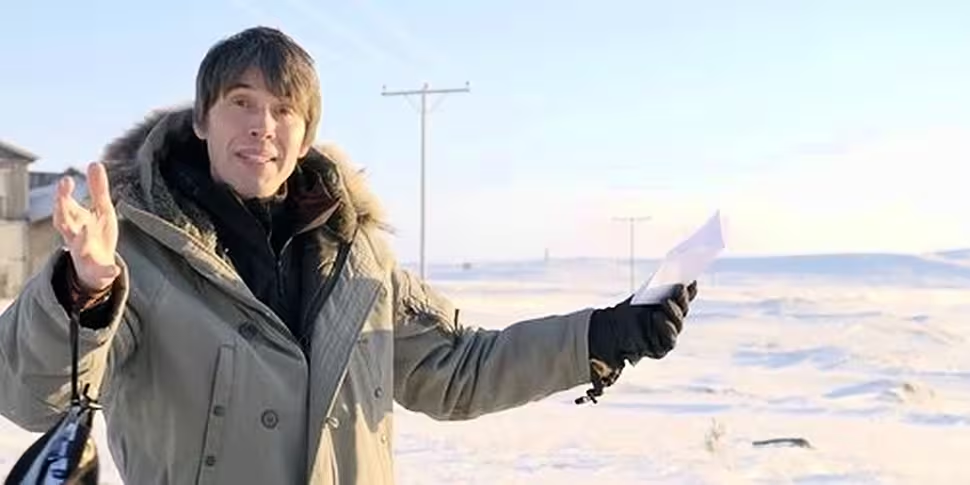“The whole universe, the whole of physics, is contained within a snowflake,” says the crown prince of the BBC, the scientist – and retired pop star – Brian Cox. More than two decades after he shot to the top of the charts with Things Can Only Get Better, things have only gotten significantly better for the Fellow of the Royal Society, the thinking viewer’s crumpet whose self-titled tour is already selling tickets to pack out Dublin’s 3 Arena in 2017. This after already selling out an Olympia gig this November. When it comes to understanding the universe, star power clearly plays its part.
Named heir apparent to the Beeb’s iconic scientific documentary shows by Mssrs Moore and Attenborough, Cox has now made the leap over from Two to One, hoping to widen his appeal to the biggest audience on that side of the Irish Sea. With a new four-part series exploring how the forces of nature and science have combined to shape the earth as we know it, Cox mild-mannerdly grins his way through complex scientific principles, looking like a substitute teacher who moonlights as Ian Brown in a Stone Roses cover band. The 6,350g Roses, perhaps?
Not that the BBC alone footed the bill on this globetrotting series. A co-production with PBS in the US and France Télévisions, the opening episode featured six different locations across three continents. In 60-minutes of slickly edited and electronically scored visuals, Cox’s explanations of the applications of physics and mathematics took viewers from Norway to Catalonia’s jaw-dropping people towers, then on to the Nepalese Himalayas for a spot of honey hunting. After that we bobbed around natural and man-made hot springs in Florida with manatees, went snorkel foraging with spritely septuagenarians in South Korea, and surveyed what actually lies under the tip of an iceberg in the chilly seas around Newfoundland. The only unifying factor tying all these together, beyond the eponymous forces of nature, was Cox’s cool-headed narration and presentation.
The footage captured, as you might expect, is stunning and diverse but it has to be. Compared to the BBC’s Attenborough-narrated wildlife documentaries, whose singular voice in the field of ecology television has seen him become a sort of gender fluid mother nature for millions, Cox has an uphill battle. When compared to a polar bear stalking the barren tundra, having gone days without a meal, trailed by a nursing cub, where’s the hook in a show that tries to spin the same human pathos out of the knowledge that the diametric size of a celestial body will ultimately determine whether or not it’s pushed and moulded into a sphere by gravity?
This is why Forces of Nature pulls people into its orbit when explaining its laws and theories. The most successful and thrilling is watching castells, the UNESCO-protected towers of people turned into a competitive sport in Catalonia, come tumbling down as gravity works its irresistible force against the strength and hubris of human beings. The competition is breathtakingly dangerous, culminating in a precarious climb to the top of a mass of people by the rarest of rare sights on television, a six-year-old child who isn’t a precocious demon. And yet the pay off, that the circle formed at the bottom of the tower matches the forces shaping the planet, is lost and heavy handed, with the human story more enthralling than the physics behind it.
Forces of Nature is not a perfect blend of science and entertainment, but it - like the Catalonians giving two fingers to gravity - puts on a good show. It exists in a world where if viewers are struck by the questions why ice floats or why bees shape their honeycomb hexagonally, there are already 100 three-minute videos detailing the answer on YouTube. Whether or not Cox’s personality is enough to tie all of these together into a 60-minute splash of appointment-viewing television remains to be seen. But he’s a scientist, and experimenting is part of the game.
Forces of Nature with Brian Cox airs on BBC One on Mondays at 9pm









